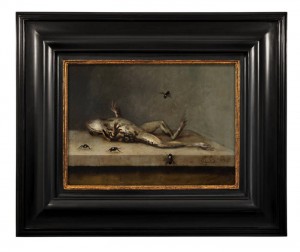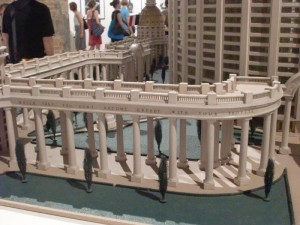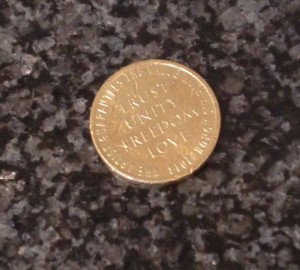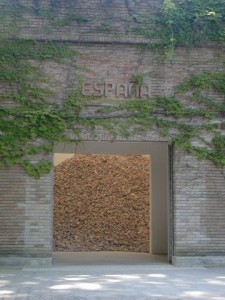Rob and Nick Carter’s art is a memento mori with a twist, because what appears initially as a painted panel in a wooden frame (of the kind favoured by Dutch 17th-C
masters), upon sustained looking reveals a screen playing a looped animated image of a painted frog breathing its last and slowly decomposing before our eyes. An updated symbolic reminder of the inevitability of death for our digital age. Read more about Transforming Vanitas Painting, in my BCS article this month.
 Catherine Mason
Catherine Mason
I’m in a new film – Cley Marshes
See me speaking about the history of landscape painting in North Norfolk in the new film Cley Marshes: A Wild Vision, produced by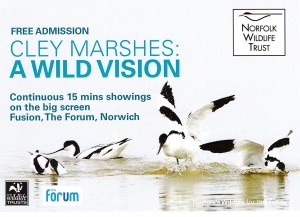 David North for the Norfolk Wildlife Trust’s Cley Marshes Appeal. If you are visiting Norwich in September, do pop in to the Forum to see this inspiring film featuring Bill Oddie, wildlife experts, artists and others sharing their stories of this special place.
David North for the Norfolk Wildlife Trust’s Cley Marshes Appeal. If you are visiting Norwich in September, do pop in to the Forum to see this inspiring film featuring Bill Oddie, wildlife experts, artists and others sharing their stories of this special place.
The NWT is the oldest of a national network of wildlife trusts. The 400 acres of Cley Marshes were purchased by Dr Sydney Long in 1926. Long went on to found the Norfolk Wildlife Trust with Cley becoming the Trust’s first nature reserve. For generations this site has enjoyed a worldwide reputation as a superb site for watching birds and experiencing nature. The appeal is raising funds to purchase an additional 143 acres – this is a unique opportunity to ensure that coastal land from Blakeney Point to Kelling would all become one continuous nature reserve. Find out more about my landscape art project, Spirit of Place.
Role-play at the Biennale
![Nicola Costantino, Rapsodia inconclusa [Unfinished Rhapsody]: Eva el espejo [Eva the Mirror], detail of installation Argentina Pavilion: Eva - Argentina, 55th Venice Biennale 2013. Copyright the artist, reproduced with permission.](http://www.catherinemason.co.uk/wp-content/uploads/2013/08/Eva-low-res-251x300.jpg)
Nicola Costantino’s, Rapsodia inconclusa [Unfinished Rhapsody], is an installation currently showing at the Argentina Pavilion of the Venice Biennale, which uses digital video to speak of the nation’s continuing attempts to make sense of a turbulent 20th-C political history. At the heart of this work is the controversial and emotionally-charged character of Eva Peron, the First Lady of Argentina from 1946 until her death in 1952. Read about Nicola Costantino’s work in my article this month for the BCS:http://www.bcs.org/content/conWebDoc/51225
Re-Visiting the Grand Tour
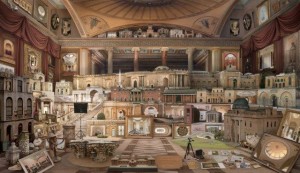
The UK artist and Royal College of Art graduate Emily Allchurch creates complex photographic images which draw on art history to make contemporary re-creations of iconic works. My image for the BCS this month is Grand Tour: In Search of Soane, an amazingly detailed and finely-crafted work currently on view at the Royal Academy of Arts Summer Exhibition (to 18 August). Read it here: http://www.bcs.org/content/conWebDoc/51058
Report from the 55th Venice Biennale – Surrealism & Souvenirs
Having recently returned from the art bun-fest that is the Venice Biennale, two main things strike me the quantity of surrealism on display and, as evidenced in the Russian and British pavilions, the importance of souvenirs.
I was pleasantly surprised by the selection on offer at the main exhibition hall in the Giardini from this year’s curator Massimiliano Gioni, which contained a large degree of outsider art to illustrate this year’s theme – The Encyclopedic Palace.
The inspiration behind this being the work of Italo-American self-taught artist Marino Auriti who, in the 1950s, conceived of an imaginary museum that was meant to house all worldly knowledge, bringing together the greatest discoveries of the human race, from the wheel to the satellite. Sadly Auriti did not live to see the invention of the Internet & the World Wide Web, which his ideas seem to presage. His large model for the museum was exhibited in the Arsenale and contains quotes offering good advice written around the outside of the building, in letraset (Watch that you don’t become greedy with your profits is my favourite, see pic above).
Given the theme, it was a unfortunate that Massimiliano Gioni chose not to confront the reality of contemporary life by including art that addresses information and communications technology nor be informed by the increasingly virtual lives we now live on-line, through social networking, etc. The only piece with reference to this (and it was an historic one) was a video montage of work by Stan Vanderbeek at the end. Included within this were pioneering early computer-generated film clips, although from the explanatory panels the audience wouldn’t have known this. Apart from this failing, there were many things to admire here and new names to discover, much of it historic. I have had to rein myself in and show only a small selection.
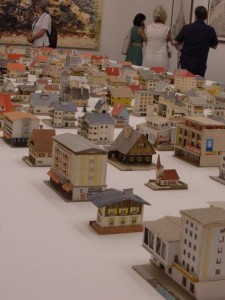
On view was a selection of 176 models, from Oliver Croy and Oliver Elser, The 387 Houses of Peter Fritz (1916- 1992) Insurance Clerk from Vienna. These intricately detailed models of a wide variety of vernacular architecture were discovered wrapped in garbage bags in a junk shop by the artist Oliver Croy, presumably left there on the death of their creator Peter Fritz. Little is known of Fritz, but he must have spent years working on these constructions using cardboard, matchboxes, wallpaper, foil and other everyday materials.
For the British pavilion, Jeremy Deller’s English Magic examined the notion of what Englishness might mean in the 21st-century by showing an eclectic variety of objects (and a film), some old (like ancient axe heads from the Museum of London), some made especially for this show and controversial, like the giant hawk and Range Rover mural (seen here), an ironic reference to an alleged incident of the shooting of a rare bird by Prince Harry (another work on this theme was pulled).
It was clear that Deller is really more of a curator than a maker, but it was none the worse for that. He also served tea and gave visitors a chance to print (or at least rubber-stamp) their own souvenir. Various bags, posters, books and a vinyl record of the music of the Melodians Steel Orchestra from South London (featured in his film) were available to buy as souvenirs. This show will be coming to Turner Contemporary in Margate next year.
The Russians also produced a souvenir, but only women were allowed to collect it. The artist Vadim Zakharov focused on the ancient Greek myth of Dana , the mother of Perseus by Zeus. Thousands of specially made golden coins rained down in their pavilion (the falling shower of gold referencing the seduction of Dana as an allegory for human desire and greed, but also to the corrupting influence of money). Women visitors, equipped with umbrellas to protect from the torrent of metal coins, were encouraged to collect them up and deposit them in a shoot, thus recycling them back into the artwork. As such, we guarantee the flow of material goods as an ongoing process as the blurb put it.
Gold might have been in abundance in Russia, but Spain showed their disgust with the current state of the economy by filling their pavilion almost entirely with a giant pile of rubble (and no doubt saving themselves money by not having to get special coins minted).
Among offsite projects, the highlight was famous Chinese artist Ai Weiwei’s S.A.C.R.E.D, located in the beautiful setting of Sant Antonin church. Six large, heavy, Donald Judd-like bronze containers filled the space dramatically; inside each one a tableau depicting Mr Ai’s 81 day incarceration at the hands of his government in 2011. The installation was reportedly built in Korea to the artist’s direction, as Mr Ai is currently being kept by force in Beijing. Yes, it was very literal, but it did serve to remind us of the importance of Ai Weiwei keeping his profile high therefore a spot at the Biennale was an absolute must for this dissident artist to protect himself from a Chinese government who is not sure quite what to do with him, but knows that the world is watching. Visitors to the show, looking through the peepholes in the boxes, acted as witnesses to crimes against the individual. It was not too difficult to draw parallels with The Stations of the Cross, a Catholic ritual where a prayer is said in front of icons depicting each act against Christ as he is led to his death. Let us hope that this does not prove a portent for Ai Weiwei.
A Glitch in the Matrix
Have you ever heard of Glitch Art? Neither had I until Glitch Moment/ums the current exhibition at Furtherfield, which introduces this fascinating and varied aesthetic inspired by faults and malfunctions – the frustrating by-product of technology gone
awry.
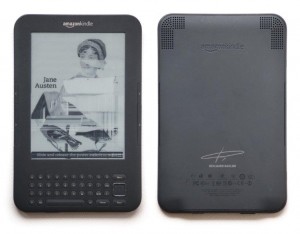
Benjamin Gaulon, our featured BCS artist this month, has a unique way of considering current information and communication technologies and teasing art from it. Learn more about Glitch Art and this artist here.
Book Review: The Art of Jeremy Gardiner Unfolding Landscape
 My review of Jeremy Gardiner’s beautifulnew book is out now in the Art Quarterlymagazine. Read a PDF here.
My review of Jeremy Gardiner’s beautifulnew book is out now in the Art Quarterlymagazine. Read a PDF here.
Jeremy Gardiner (1957- ) aims to help us experience the changing face of the earth through his art and to this end has spent decades exploring the ancient history of the Jurassic Coast. This book calls his art A vision of landscape as an inscribed tableau of ancient geological or man-made patterns (Peter Davies). The results of Gardiner’s study of place lie within this handsome hardback, which situates him firmly within the history of the great English tradition of landscape painting stretching from Constable to Nash.
See also my previous article about Gardiner’s digital art practice here.
A Layered Practice

This month’s BCS column looks at the work of printmaker Paul Coldwell, who integrates digital techniques into his traditional practice to great effect. Read it here: http://www.bcs.org/content/conWebDoc/50703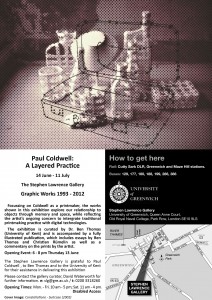
Paul’s exhibition is at the Stephen Lawrence Gallery, London until 11th July. Click on the image on the right to see details.
Additionally, Paul has an exhibition at the Scott Polar Research Institute, Cambridge until 20th July.
Chinese Challenges

With an estimated 500 million Internet users, the Web has been called the most creative space for self-expression in China. In particular social networking and blogging on the Internet is hugely prominent. In this article I look at the challenges facing two Chinese artists – Wang Bo and Ai Weiwei, who use this technology within the free market/communist state contradiction that is China today. Read it here:http://www.bcs.org/content/conWebDoc/50489
Fake Nature
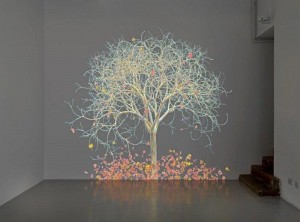
Jennifer Steinkamp’s beautiful tree moves as though blowing in the wind and transforms over time as the seasons change. This Los Angeles based artist explores ideas about architectural space, motion and perception using computer animation to engage viewers through use of transient elements in the natural world. Read more about Steinkamp and her work in this month’s BCS column here:http://www.bcs.org/content/conWebDoc/50226

